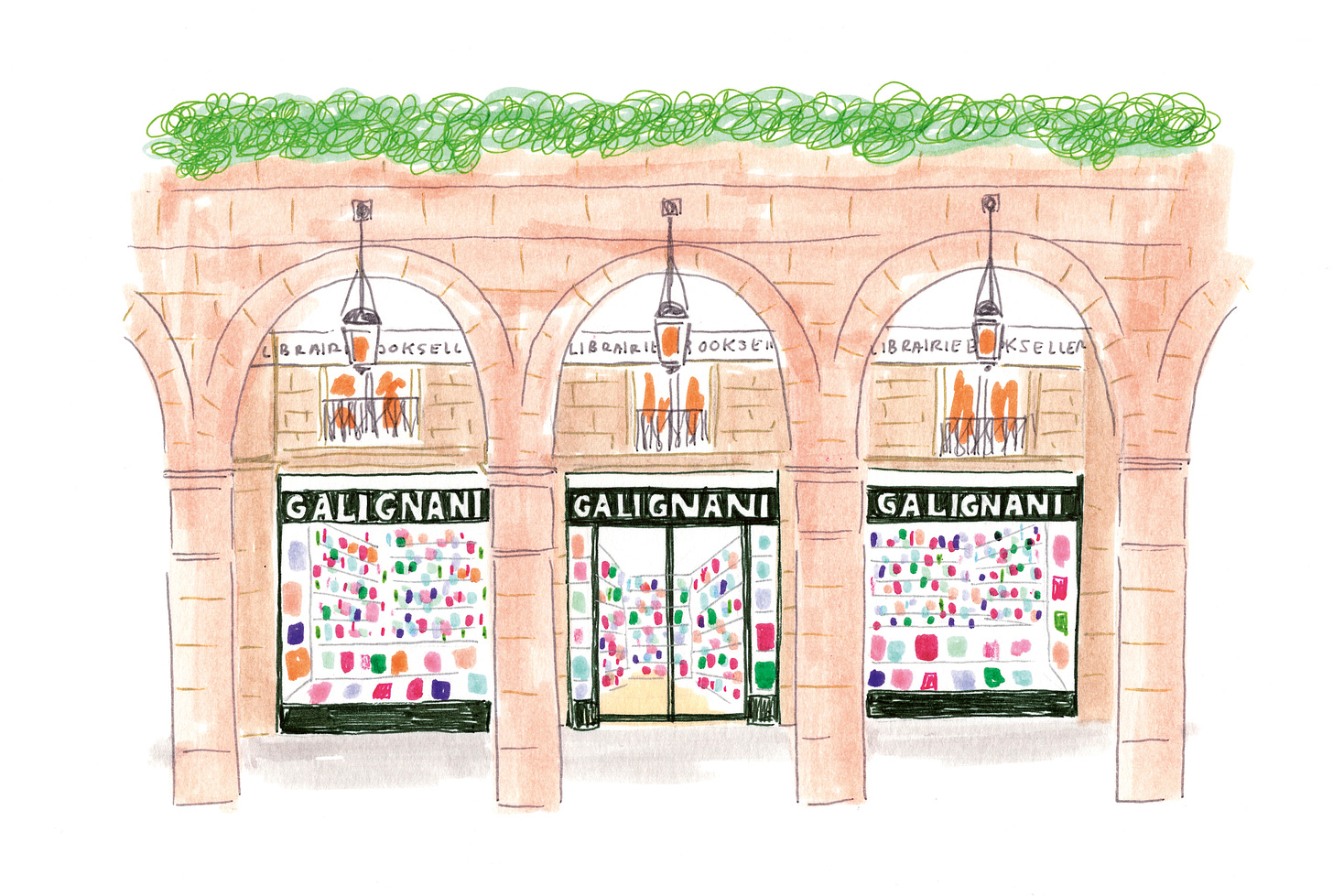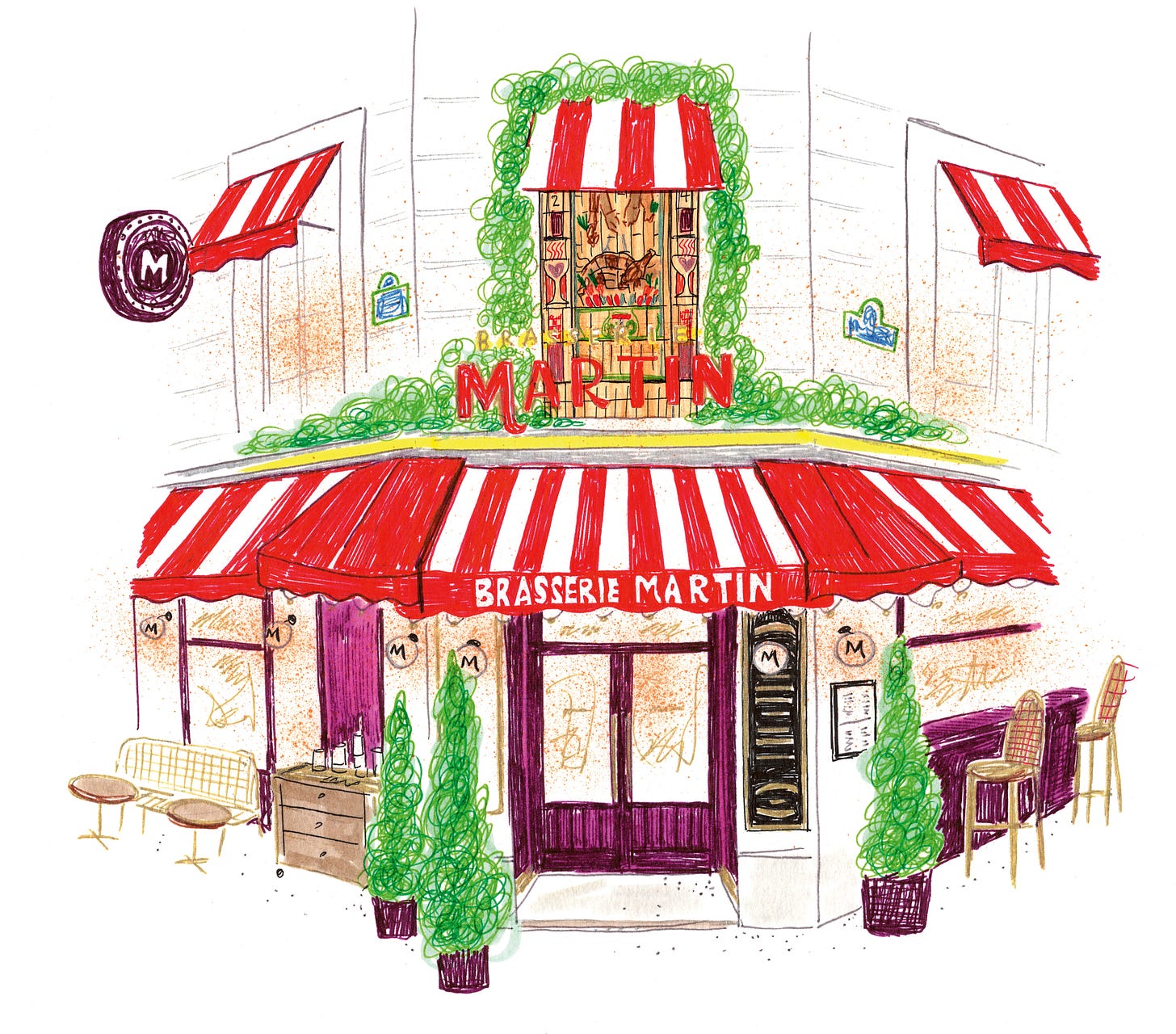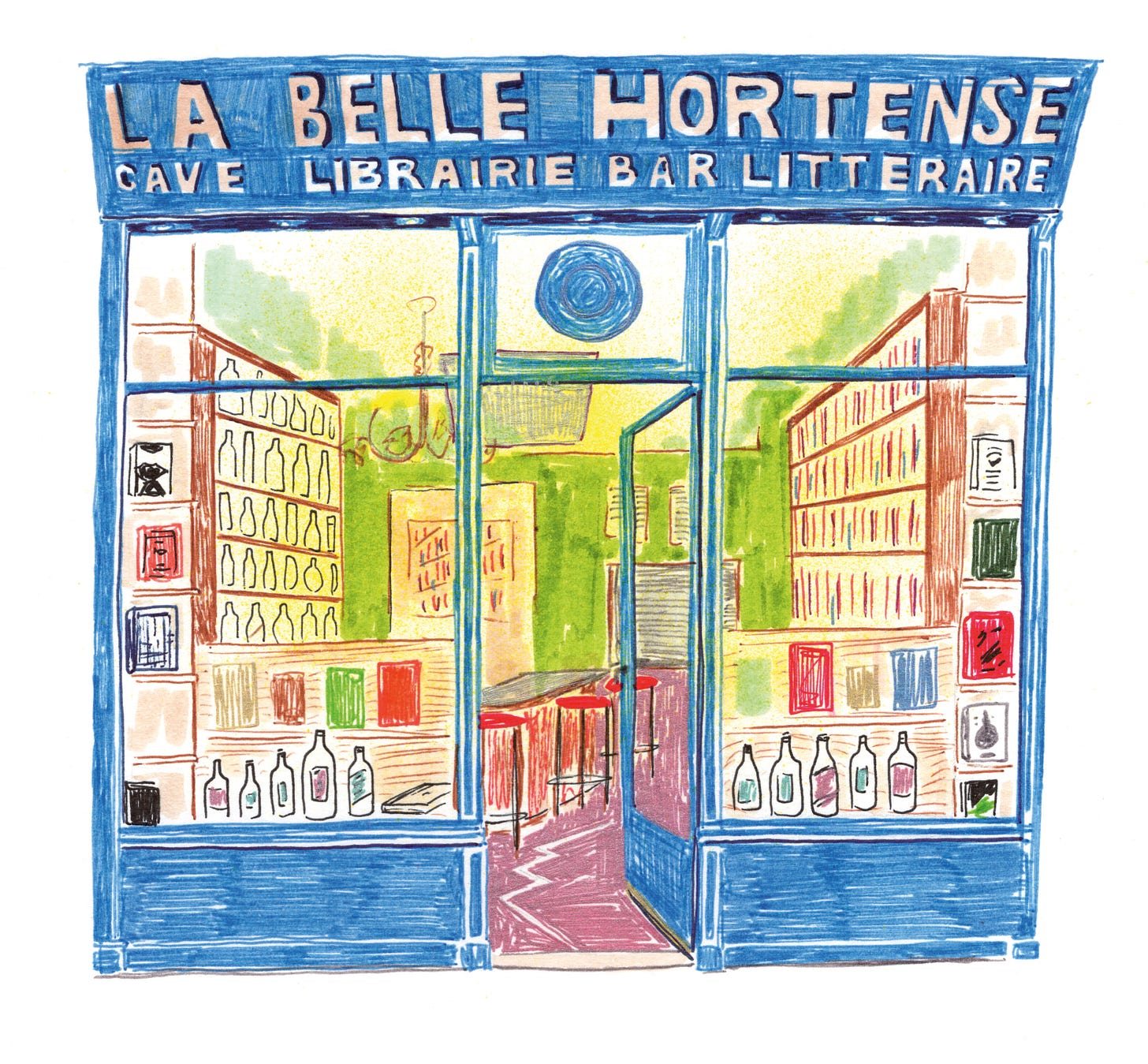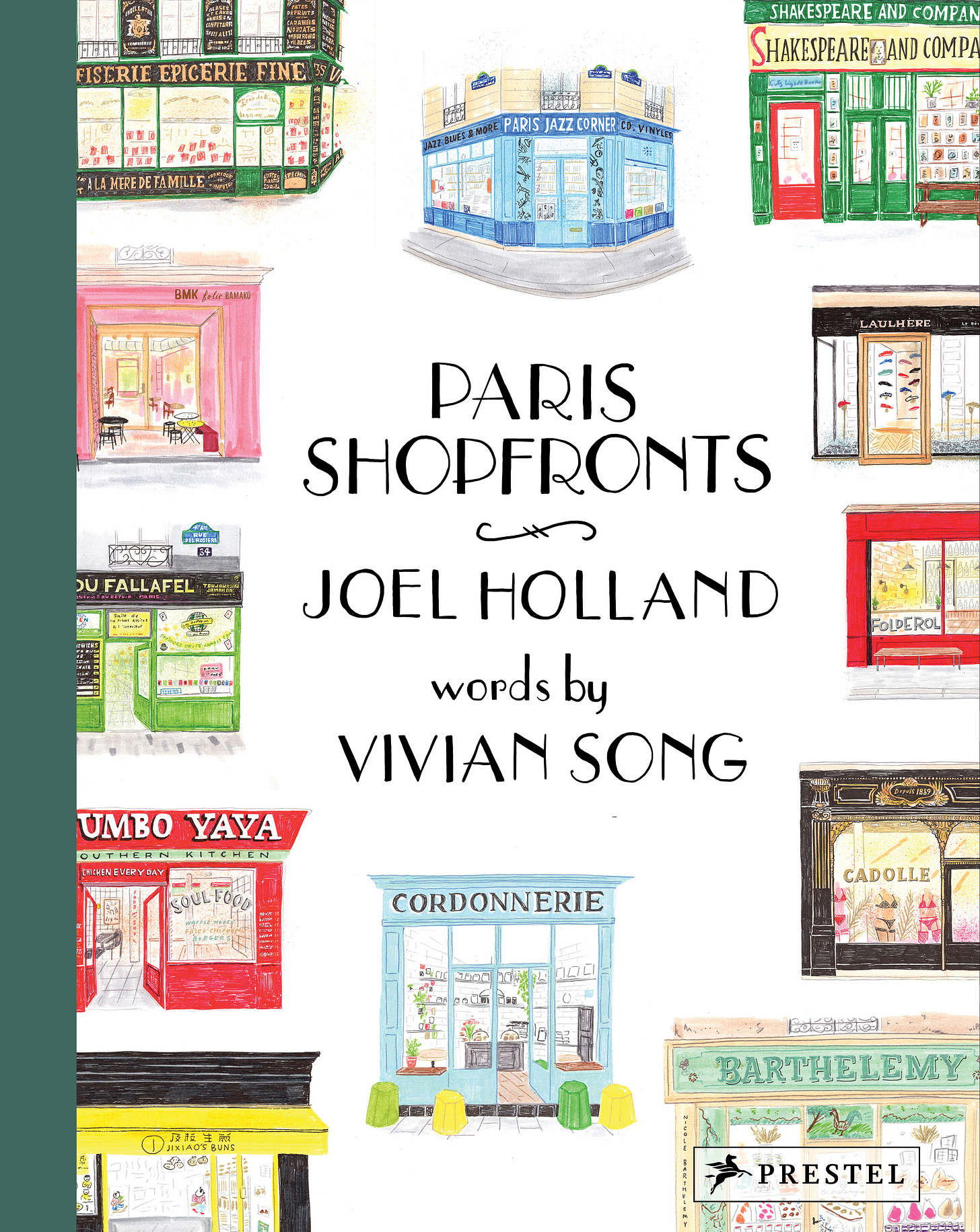23: Meet the artist sketching shops from Paris to New York
In a new book, illustrator Joel Holland captures the cafés and boutiques of the City of Light.

Some people seek out chain restaurants and shops on their travels (e.g., the garish chocolate-neon confection of the M&M’s flagship in Times Square). But Manhattan illustrator Joel Holland aims his eye and colored pens at small storefronts and storied, independent restaurants in his hometown and other locales.
Drawings of Big Apple landmarks (the pint-sized Case Rubber Stamp shop, LGBTQ landmark the Stonewall Inn) headlined in Holland’s first book, “NYC Storefronts.” Publishing on April 8, Holland’s latest book,“Paris Shopfronts” ($30, Prestel), features whimsical sketches of the French capital’s umbrella shops, brasseries, and bookstore/wine bars. I chatted with him about it–and how travelers can find indie businesses, too.
Why did you start drawing storefronts?
I’ve always been attracted to hand lettering and vernacular signage. In old sketchbooks I have quick renderings of storefronts in Baltimore, Brooklyn, Rome, and Los Angeles. Those drawings evolved into what I’ve been working on for about five years. Now I’ve made drawings in Thailand, Japan, England, Paris, and more.
What makes you want to sketch a particular shop or restaurant?
I’m drawn to the aesthetic and the story. Each shop I draw has to have both, or at the very least a brilliant story or product. Great mixed-berry tart? Great shoe-repair service? Yes, please.
I love finding the tiny details the shopkeepers add, sometimes subconsciously, and capturing them. The more hand lettering the better, I love signage. Oh and awnings—I love awnings!
Your new book is about Paris shopfronts. How are they different those in New York?
Drawing wise, they’re not soooo different. Paris has shops that are A LOT older than here in Manhattan, so that’s huge. I think that shows up in a lot of drawings, the signage especially. But it also appears in the adoration that locals have for these spots. They are woven into everyday life [in Paris] in a slightly deeper way.

Did you have favorite spots in Paris?
I love the cafes, though they were kind of nightmares to draw, with the angles, the chairs, and the glowy-ness.
How do you find interesting small businesses?
In New York it’s mostly on foot. It’s probably my favorite thing to do in the city, just walking around and exploring. Otherwise I’m on the bus, snapping pics and taking notes of places that look interesting.
I do get commissions where someone has their own experience and relationship with a shop and wants to commemorate it. I really enjoy hearing the stories that others have, as it’s a way of connecting and commiserating over something meaningful.

Working with my editor Ali Gitlow, after the New York City book we had a formula of the kind of places we wanted to include—small, family-owned, good stories, good products, and as diverse and inclusive as possible. We used a similar approach with [my 2024 book] Brooklyn Storefronts with writer David Dodge. Ali, David, and I are all in New York, so we asked our friends in as many different neighborhoods as possible.
For the London Shopfronts book and Paris book I worked with writers—Rosie Hewitt for London and Vivian Song for Paris. I’ve been to both cities but never lived like a local. Both writers made those books special for those cities.

How long does it take you to capture one storefront?
It depends on how intricate or detailed the shop is. For some storefronts, I can do two in a day. I like to say that the shops draw themselves, and thus the time spent is dictated by how much they have to share.
I just drew the Sock Man shop in New York City, and it took me a few days. The exterior is a bit more involved than if it were just a flat color.
Tell me more about your materials and process.
Years ago, for my illustration work, I exclusively used tracing paper and brush pens. Then I had a job come in where I was to use a specific pen, the Pilot G-2. I had a rainbow of colors and somehow it just—no pun intended—clicked for me. The pens feel great in my hand and they flow at the perfect pace. That’s how I started these full-color storefront drawings.
As I did more and more I came across colors or textures beyond the reach of those pens. So I resorted to what was around me. My kids have a thing they call the art cart in our house, and in there were some blow markers. They give off an airbrush look, plus a grit and an emotion I couldn’t achieve otherwise.
What do we lose when smaller stores like these close?
I think about it like this: Living in cities, the businesses around us are like family. We need them, they color our lives. Yes there may be other options, but we develop relationships and preferences and it affects our day to day. Otherwise what’s the point? When these shops close our lives change and not for the better.

Do the owners of small businesses feel about the drawings?
They love them! Hearing stories from people shop at these places as being my favorite but seeing owners faces when they see the details, from Gramercy Park’s Warshaw Hardware and their ’got boxes’ sign to the painted butcher block at Albanese Meats [a 100-year-old market in Manhattan’s Little Italy]. It’s so sweet.
So how can travelers find indie businesses like these?
Go with your gut. Explore. Try new things. Ask questions. It’s not easy to do these days but just look around, like literally. Not on a device, but just go for a walk or a bus ride and see what works for you.

Where are you and your pens headed next?
Everywhere! I’ve drawn one of the oldest Chinese restaurants in America the Pekin Noodle Parlor in Butte, Montana [open since 1911], and things like that are fun. I’d love to do more books—a California book, a second New York City book, Mexico City, or Bangkok.









Delightful array of sketches....sets up anticipation for Paris street exploration soon.... Jean